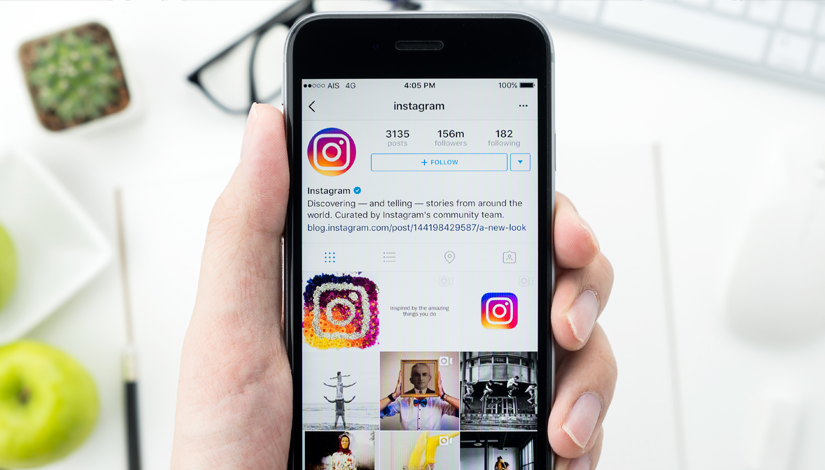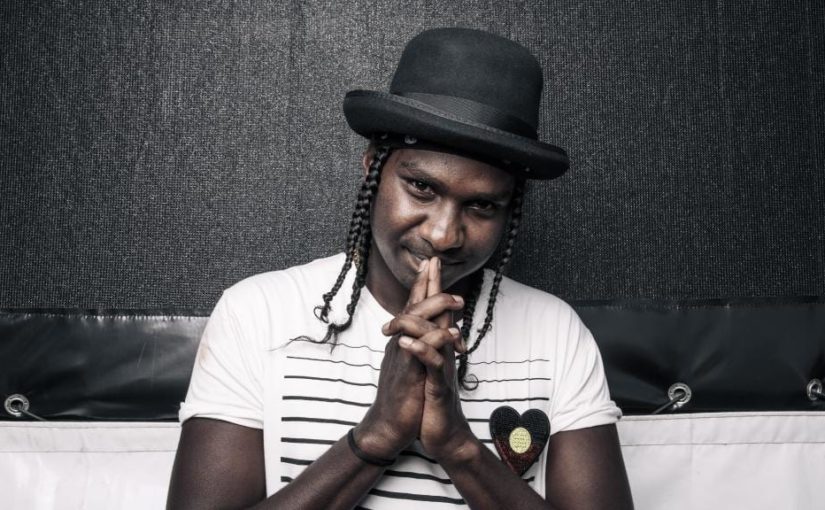The effect of social capital on Instagram
influencers audiences
Nicola Roque
Curtin University
Abstract
This paper will discuss the strong ties that are formed in the involved communities of social media influencers, using the social media platform Instagram as an example. One Instagram influencer who has a large Instagram following is Tammy Hembrow; she involves and engages with different social groups in her audience. This range of demographics involved in Tammy’s audience has created social capital held by Tammy over many different kinds of people. With the use of this influencer as an example, this paper discusses the ties formed between the influencer and the audience, the ties formed between the audience members and other audience members and the balance between financial gain and creating strong ties within the community.
Keywords: Weak ties, Strong ties, Instagram Influencers, Social Capital.
The effect of social capital on Instagram
influencers audiences
The social capital held by social media influencer’s significantly impacts on the ties formed in involved communities. Many people use social media to connect with communities, create networks and create social ties with people with similar interests. Networks within this social media context refer to these connections that are made between people with similar interests. Strong and weak ties can be created with members of these networks, and often these ties can be influenced by people who hold social capital. One platform that has many social media influencers who hold social capital is the social media site Instagram. “The top 50 Instagram influencers total 3.1 billion followers.” (Influencer Marketing Hub, 2018). These large amounts of followers often are interested in the niche markets that are presented by the Instagram influencers such as fitness, health and beauty, gaming, lifestyle, motherhood or sports and many other topics. The connection of interests held between the followers of each influencer community can create social ties. In this paper, I will argue that the social capital held by social media influencer’s significantly impacts on the ties formed in involved communities. I will be backing up this argument by looking into three main points that show the impact of this social capital on involved people. Firstly I will be discussing the relationships formed between the influencer and the audience, being strong ties with regard to the influence that these influencers have over their audience. Secondly I will discuss the relationship formed between the audience and other audience members as being strong ties due to the connection of similar interests between audience members. Thirdly I will be discussing the balance between product promotion/ financial gain and creating strong ties in the involved community. I will be discussing these points with reference to the Instagram influencer Tammy Hembrow; an Australian based fitness, health and beauty influencer and Mother.
Social capital
Social Capital refers to “The ability of actors to secure benefits by virtue of membership in social networks.” (Portes, 1998; Mu, J., Peng, G., & Love, e. 2008). Ties formed in communities refer to the weak and strong relationships formed in communities online and offline. These ties can be between social media influencers and their audience and/or between the audience members themselves. Social ties in this context can refer to a strong friendship- like relationship or to the ability of a social media influencer to influence an audience member due to the respect held by an audience member for that influencer, even though these two parties may have never engaged in conversation before. Macpherson et al (2006) argues that “Using communication technology may weaken social ties, increasing the prevalence of social isolation throughout society.” (McPherson et al, 2006; Boase, J. 2008). This communication technology referring to any technology being used to communicate with others, such as smartphones. In the context of this argument communication technology could be further defined as social media tools that are used by people to communicate.
The argument of McPherson et al. on the weakening of social ties is relevant to this argument as social ties may have been weakened within influencers and their audience’s due to the lack of actual conversation between the influencer and each audience member. However strong ties may also be created due to the use of social media communication technologies, between influencers and their audiences and between the audience members. The majority of studies however suggest that people utilise different kinds of social media communication technologies in order to fit their lifestyles and social needs. (Boase, J. 2008). The majority of people use social media to connect with others and grow their communities, in turn decreasing the amount of social isolation within society. (McPherson et al, 2006; Boase, J. 2008).
Relationships between the influencer and audience
Tammy Hembrow is an Instagram influencer who has created a community involving different social groups and members; mothers, fashion and beauty lovers and fitness lovers. Tammy Hembrow’s different range of interests and talents allows for a large audience of different demographics. Tammy has over 8 million Instagram followers, with an average of 5 thousand followers per day. (Social Blade, 2018). Instagram influencers such as Tammy Hembrow that reach a large audience, often feel a range of benefits from their jobs such as receiving money, free products and potentially being able to make influencing their main occupation. “Networking is the ostensible purpose of these sites – using one’s chain of connections to make new friends, dates, business partners, etc.” (Donath, J., & Boyd, D. 2004). Networking for an influencer like Tammy, means making money and is absolutely imperative to making her brand flourish. Growing these communities is essential to influencers, using the chain of connections to find new followers with similar interests. Tammy creates and keeps these connections strong with her audience members by replying to comments made by audience members and by speaking on her Instagram story, answering questions for her audience. She also has other active social media accounts such as Twitter, Snapchat and Youtube. Using these different platforms allows her audience members who have found her images on Instagram and want to find more information on the topics that she covers (i.e: motherhood, fashion, fitness etc) to follow links to each of her social media accounts and find what they are looking for. By using this chain of social media communication technology platforms Tammy has created a larger audience for herself, reaching different types of audience members on each platform. This has created multiple social ties between herself and each of her audience members.
The social capital held by influencers like Tammy creates strong ties with their audience members due to the ability that they have to influence audience members. This includes the ability to influence audience members to purchase promoted products, to try activities promoted by the influencers and to follow other brands or influencers that are connected to the influencer. Social network influencers are seen as “A trusted tastemaker in one or several niches.” (Veirman, D, M., Cauberghe, V., & Hudders, L. 2017). These influencers are seen as trusted due to the high number of followers that they obtain, making audience members feel that if other people of similar demographic to themselves, trust, respect and follow the information that these influencers put forward, that it is suitable for them to do so too. This social capital held by these influencers therefore impacts on the social ties created by the influencer and their audience members by allowing Instagram influencers to have some power and influencer over their audience, which shows a strong tie between these audience members and the influencer.
Relationship between audience and other audience members
“Underlying all the networking sites are a core set of assumptions: that there is a need for people to make more connections, that using a network of existing connections is the best way to do so, and that making this easy to do is a great benefit.” (Donath, J., & Boyd, D. 2004). Finding new connections is easier when a preconceived group of individuals with similar interests has already been created. Audience members know where to go to find people to make connections with. Social media sites allow users to meet strangers, but they also “Enable users to articulate and make visible their social networks. This can result in connections between individuals that would not otherwise be made. (Boyd, D., & Ellison, N. 2007). Often social media influencers allow for connections to be made within audience members that usually would not connect, potentially due to differing geographic location or differing demographics. Using Tammy Hembrow’s following as an example, many traditional followers of beauty and fashion bloggers on Instagram are young women around the ages 13-25, however the fact that Tammy is a young mother brings in a new set of audience members; mothers. This range of followers allows for audience members who may not have connected before to connect online.
Counter argument
Danah M. Boyd and Nicole B. Ellison argue that although social network sites do allow strangers to meet online, the main reason for people using social media sites is in order to articulate their pre-existing social networking connections, this could be relationships that have been formed on other social networking sites previously or offline. Boyd & Ellison argue that these meetings between people over social media are often due to “latent ties”, that are existent between people that have met offline before. (Boyd, M. D., & Ellison, B. N. 2007). This counter argument is relevant in that often people on some social media sites have met offline, however in the context of the social media site Instagram, people post images that capture their brand image or something that they want to present about themselves, creating an identity for themselves online. This encapsulate the idea behind the platform, putting forward an identity you want to be received by others, through the use of images and videos. Due to this being the main purpose of Instagram, it makes sense that people who do not know each other offline would meet online and follow each other, perhaps for inspiration or because they share similar interests. This creates strong ties between audience members of influencers as they have never met before but still come together due to similar interests.
Balance between product promotion/ financial gain and creating strong ties in the community
Many Instagram influencers are paid by companies to promote products due to their large range of audience members. “Instagram influencers receive payments ranging from free products to $1 million per post.” (Influencer Marketing Hub, 2018). They are paid by these company’s due to the influence that they have over their audience. This means “These endorsements are likely to be interpreted as highly credible electronic word of mouth (eWOM) rather than paid advertising as they are often seamlessly woven into the daily narratives influencers post on their Instagram accounts”. (Abidin. 2016; Veirman, D, M., Cauberghe, V., & Hudders, L. 2017). Influencers audiences feel as though they relate to the influencers they follow, to them the influencer is almost a friend or guide to finding the best clothes, makeup, fitness techniques etc. It is easy for an influencer to incorporate a paid advertisement into their feed without it seeming like they are just trying to manipulate their audience into purchasing products because they are trusted as being an expert in a niche market. “People will ignore ads, but they won’t ignore posts, mentions and blogs by influencers who they have willingly followed and routinely engage with. (Ghidotti, N. 2017).
The impact of a social media influencer not finding the balance between keeping and creating meaningful connections with people in their involved communities and product promotion/ financial gain can lead to a loss of trust between influencers and their audiences. “Celebrity endorsements, however, tend to be expensive and are sometimes viewed as untrustworthy because the stars are motivated by money and not by sharing honest opinions and experiences”. (Morgan, N. 2017). When audience members lose trust in their Instagram influencer it leads to the job of the influencer; to influence their audience into buying products that they enjoy themselves, being very hard to do. Audience members lose trust and don’t believe that the influencer is promoting a product or brand because they truly enjoy it and are only promoting it for financial gain. This can occur due to the size of the influencers audience; the larger their audience the more famous the influencer is, which can make the audience feel as though the influencer is less relatable. This can also occur because the influencer is promoting something seemingly very different to what they usually promote or doesn’t seem to align with the influencers beliefs, likes or interests in the audience’s mind.
This balance between product promotion/ financial gain, which is necessary to find due to the social capital held by the influencer, impacts on the ties formed between the influencer and the audience by potentially weakening social ties if balance is not found.
Conclusion
From the research supplied it can be said that for the most part the social capital held by social media influencers, impacts significantly on the social ties held by involved communities by creating strong ties between; the influencer and their audience and the audience members and other audience members. If a balance is found between product promotion/ financial gain and retaining a trustworthy, respectful relationship with audience members then social ties are strengthened between the influencer and the audience. By using a famous Instagram influencer such as Tammy Hembrow for reference it is evident that this argument is relevant.
References
Mu, J., Peng, G., & Love, E. (2008). Interfirm networks, social capital, and knowledge flow. Journal of Knowledge Management, 12, 86-100.
https://doi.org/10.1108/13673270810884273
Boase, J. (2008). Personal networks and the personal communication system. Information, Communication & Society, 11.
https://doi-org.dbgw.lis.curtin.edu.au/10.1080/13691180801999001
Influencer Marketing hub. (2018). 15 Mind Blowing Instagram Statistics You Don’t Know. Retrieved from: https://influencermarketinghub.com/15-instagram-influencer-statistics/
Social blade. (2018). Instagram Statistics Summary for Tammy Hembrow. Retrieved from:
https://socialblade.com/instagram/user/tammy%20hembrow
Donath, J., & Boyd, D. (2004). Public Displays of Connection. BT Technology Journal, 22 (4), 71-82.
http://smg.media.mit.edu/papers/Donath/socialnetdisplay.draft.pdf
Boyd, D., & Ellison, N. (2007). Social Network Sites: definition, History, and Scholarship. Journal of Computer-Mediated Communication, 13 (1).
https://doi.org/10.1111/j.1083-6101.2007.00393.x
Veirman, M., Cauberghe, V., & Hudders, L. (2017). Marketing through Instagram influencers: the impact of number of followers and product divergence on brand attitude. International Journal of Advertising, The Review of Marketing Communications. 36(5), 798-828.
https://doi-org.dbgw.lis.curtin.edu.au/10.1080/02650487.2017.1348035
Ghidotti, N. (2017, March 1). Snapchat, Instagram and Influencers, How to Know What’s Best for Your Brand. Public relations Tactics. Retrieved from: http://web.a.ebscohost.com.dbgw.lis.curtin.edu.au/ehost/pdfviewer/pdfviewer?vid=1&sid=76a4db91-6749-4475-86d1-b8926ff2660c%40sessionmgr4006
Morgan, N. (2017). Instagram Influencers: The Effects of Sponsorship on Follower Engagement With Fitness Instagram Celebrities. (Doctoral dissertation). Retrieved from https://search.proquest.com/docview/2014469958?pq-origsite=primo
Oberlo. (2018). How to do Instagram influencer marketing [Image]. Retrieved from:
https://www.oberlo.com/blog/instagram-influencer-marketing

This work is licensed under a Creative Commons Attribution 4.0 International License.




